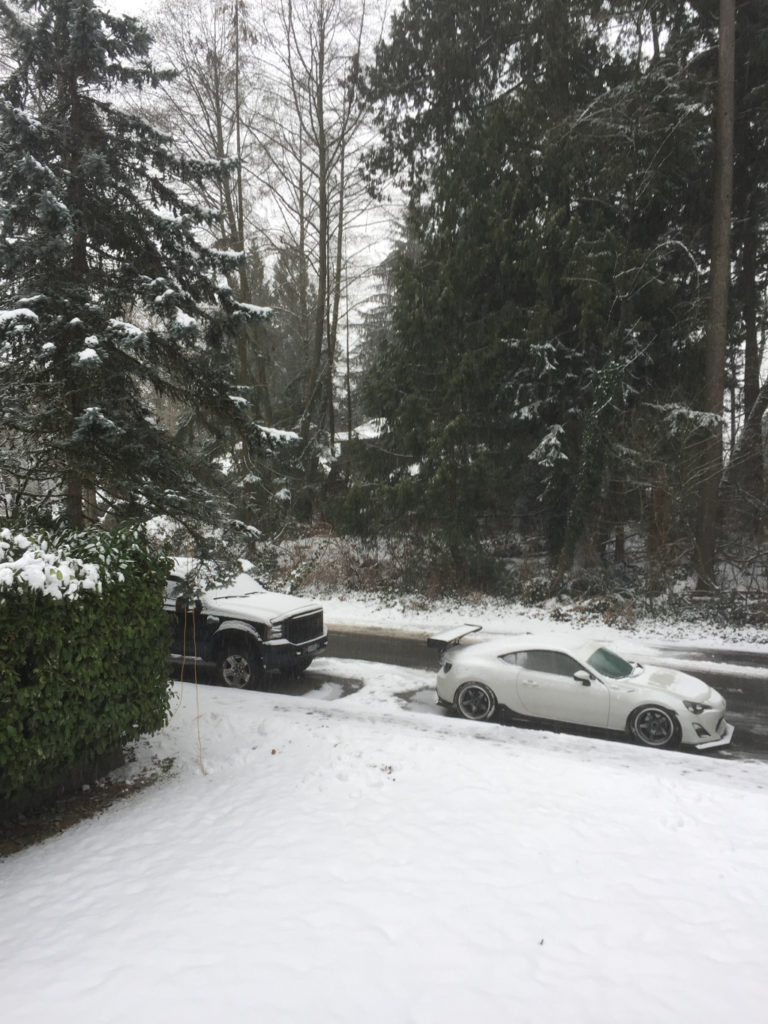My son Caleb has been training for the 2018 DownHill Mountain Bike racing season and since it is his first year to compete as an Elite or Pro racer in the BC Cup and NorthWest cup he has been putting in some extra effort. He is also planning on competing in some Freeride competitions (Downhill plus stunts) so he is also working hard to add some new stunts to his repertoire of skills. I am always looking for ways to support Caleb’s training so I was planning on taking him and a few of his training partners out to do some training runs on one on one of the mountains on the North Shore the other day but the weather did not cooperate. We woke up to about 6 inches of snow and since we live at the base of the mountain you can imagine how much more snow there is as you go up in elevation.

An advantage of living in one of the most Mountain bike rider friendly locations in North America is that in addition to some of the best outdoor riding locations we also have indoor training facilities. Caleb and I spent the afternoon at the AiReCenter in a neighboring community. The following pictures reveal the scale training facility and the intensity of Caleb’s training:

In addition to major wooden features, the facility has 3 full lines of dirt jumps including a Pro Line with wooden kickers (launch ramps).
The following starting point/ramp should give you context for how big and intense the facility is:
The Pro Line dirt jumps are a great place to practice tailwhips, flips and many other stunts that Caleb will be using in FreeRide competitions:
Fortunately, one can practice backflips on the airbag or on a smaller ramp setup before doing the stunts on the dirt:
So what does Caleb’s training for his upcoming season have to do with learning? Or perhaps a better question is what can we learn about learning from Caleb’s training experience. The 20 hours a week of indoor training at the AiReCenter can be directly applied to Freeride but many of the bike control skills can also have a positive impact on racing. For example, a DH Racer spends a significant amount of time making split-second adjustments while in the air or as they skim the surface as they are propelled over the trail. The continual adjustments that Caleb makes as he repeatedly hits the dirt jump lines or performs black flips, tailwhips, and other stunts are very similar to the adjustments that he has to make in real time on a race or Freeride course. The better the bike control a rider has the more confident they are and the better equipped they are to deal with the challenges each unique course has to offer. The fastest racers also the best riders so the more diverse a rider’s skills the better they can perform in a race or Freeride course.
One of the most important lessons that Caleb has learned this past year in training and that we can also learn from is transfer. Being able to move from theory to practice or more specifically being able to apply knowledge or a skill from one instance to another is a crucial aspect of transfer. The skills and confidence that Caleb builds at the AiReCenter are transferable to his regular training runs and ulimate to his racing. In the next few weeks, Caleb is planning to move off his dirt jump bike and onto his DH race bike at the AiReCenter to practice his backflips and tailwhips so that when he is riding on the actual trails he can perform these stunts with greater confidence and ultimately limit the risk of injury. Downhill Racing and Freeride are rightly called extreme sports because the riders are always on the verge of serious injury. Reducing the risk of injury is so important to the long-term success of the rider and to the peace of mind of the rider’s parents.
On our way home from the AiReCenter Caleb informed me that he is ready for this upcoming season and is feeling very confident in his ability. The additional 20 hours a week of indoor training he has added to all this other training is paying off and in another three months when the season starts Caleb is confident that he will be best prepared he has ever been. He is also recognizing how important it is to build his skills slowly through consistent deliberate practice. He is breaking down each aspect of his stunts and is working on each component to make sure that he has addressed all the necessary factors. The continual and repetitive aspect of performing on the edge of one’s ability and then making slight but cumulative adjustments is the essence of deliberate practice. Making those small and cumulative adjustments are what separates the experts from the amateurs and in the case of extreme sports, it is what will keep an athlete out of the hospital–which is also a good thing for the athlete and his family.



































